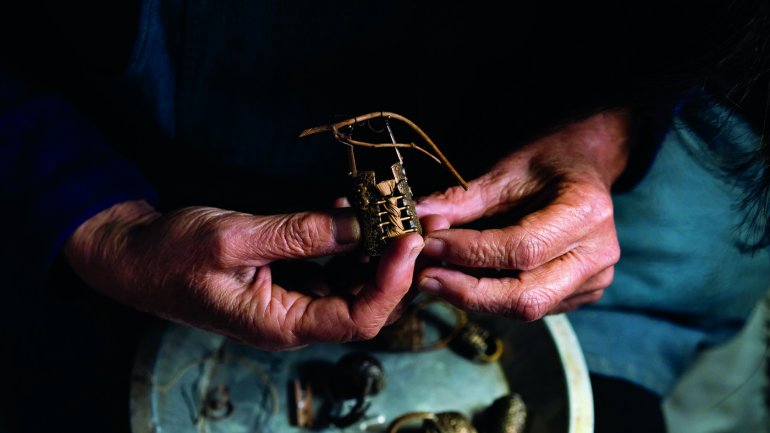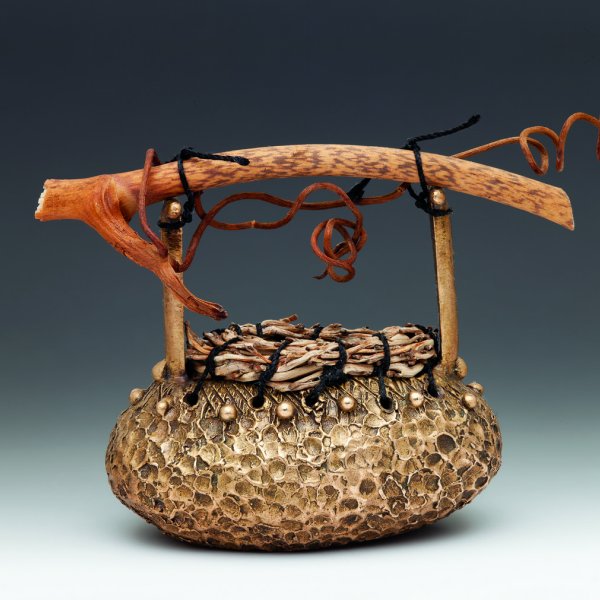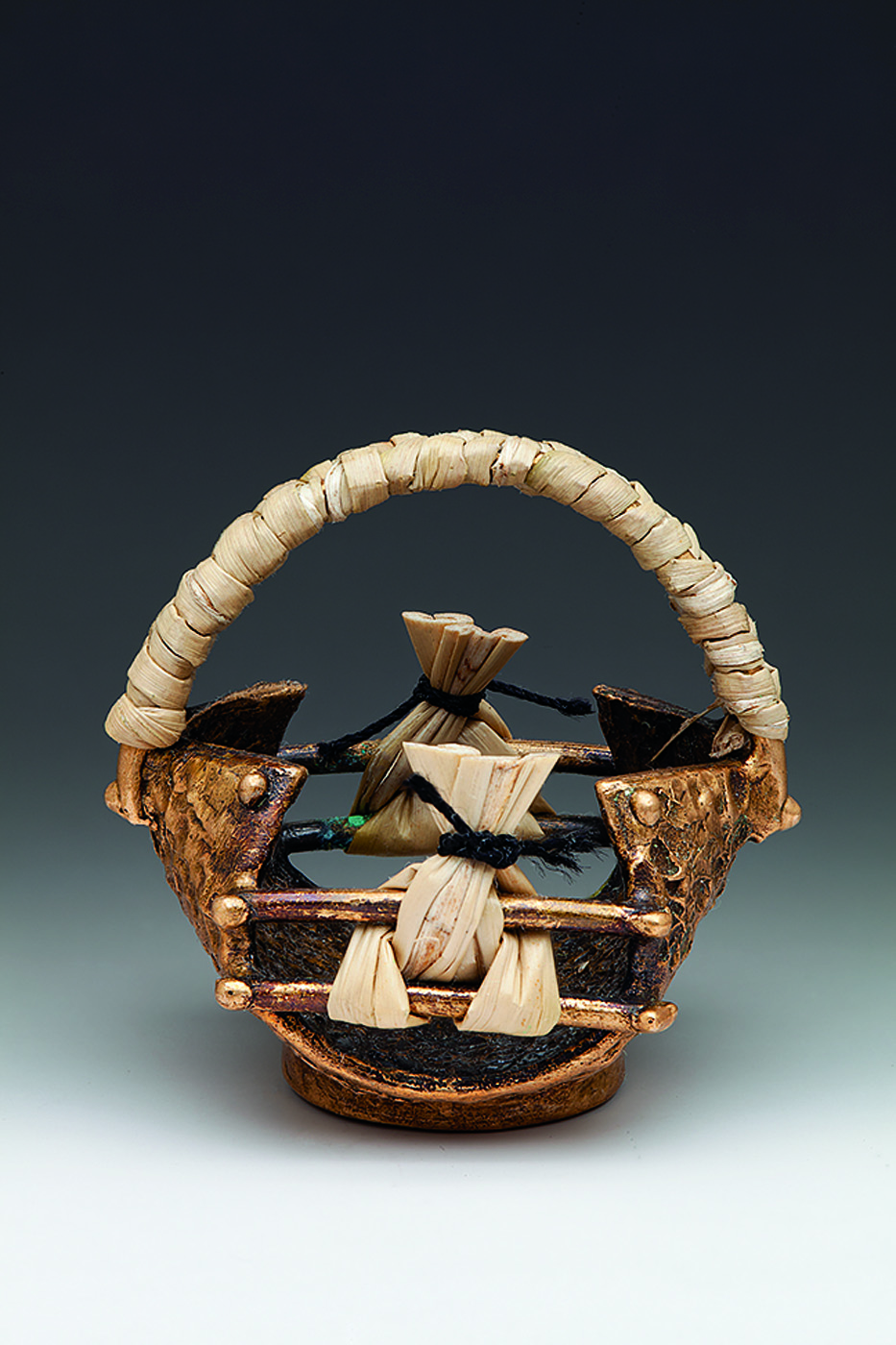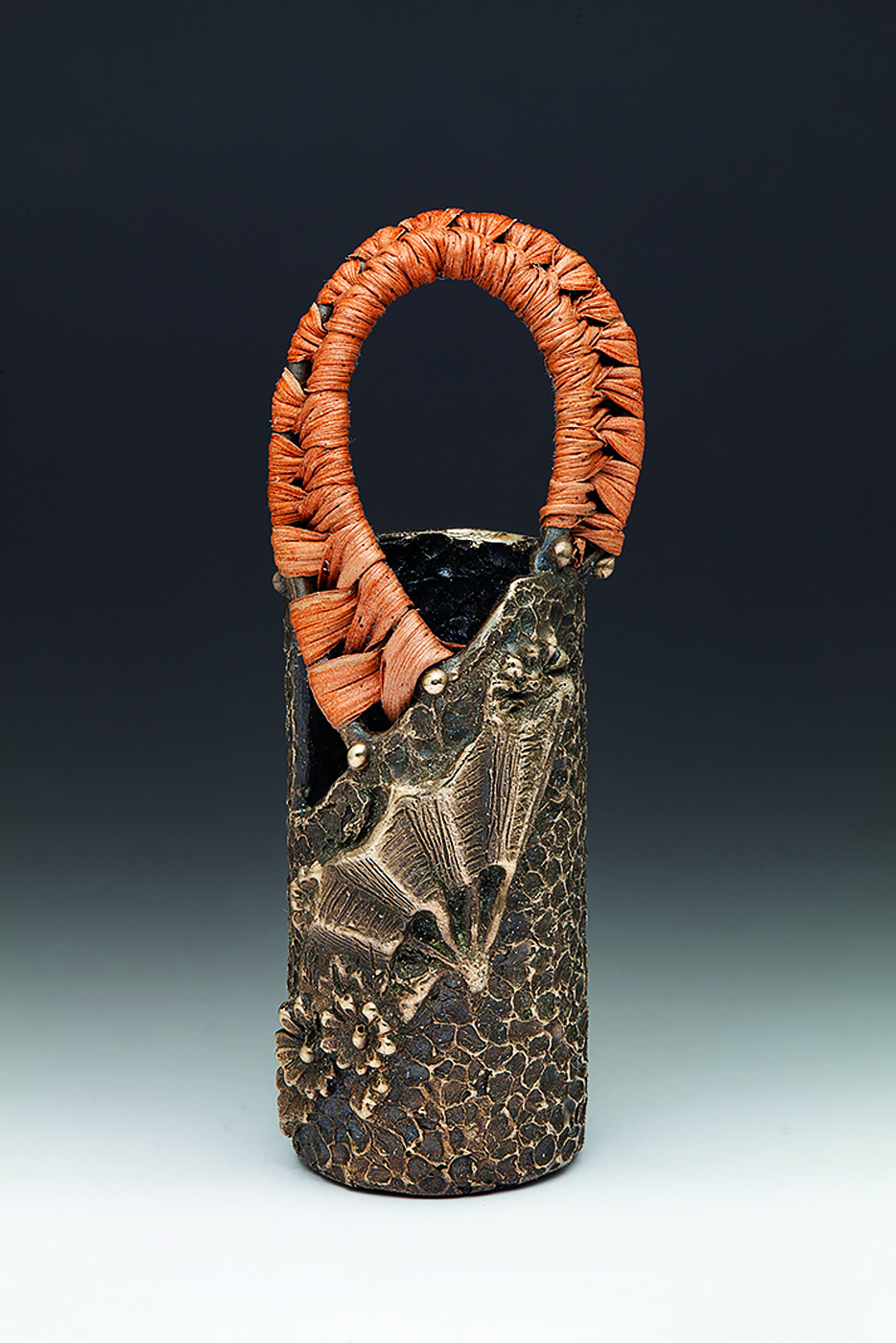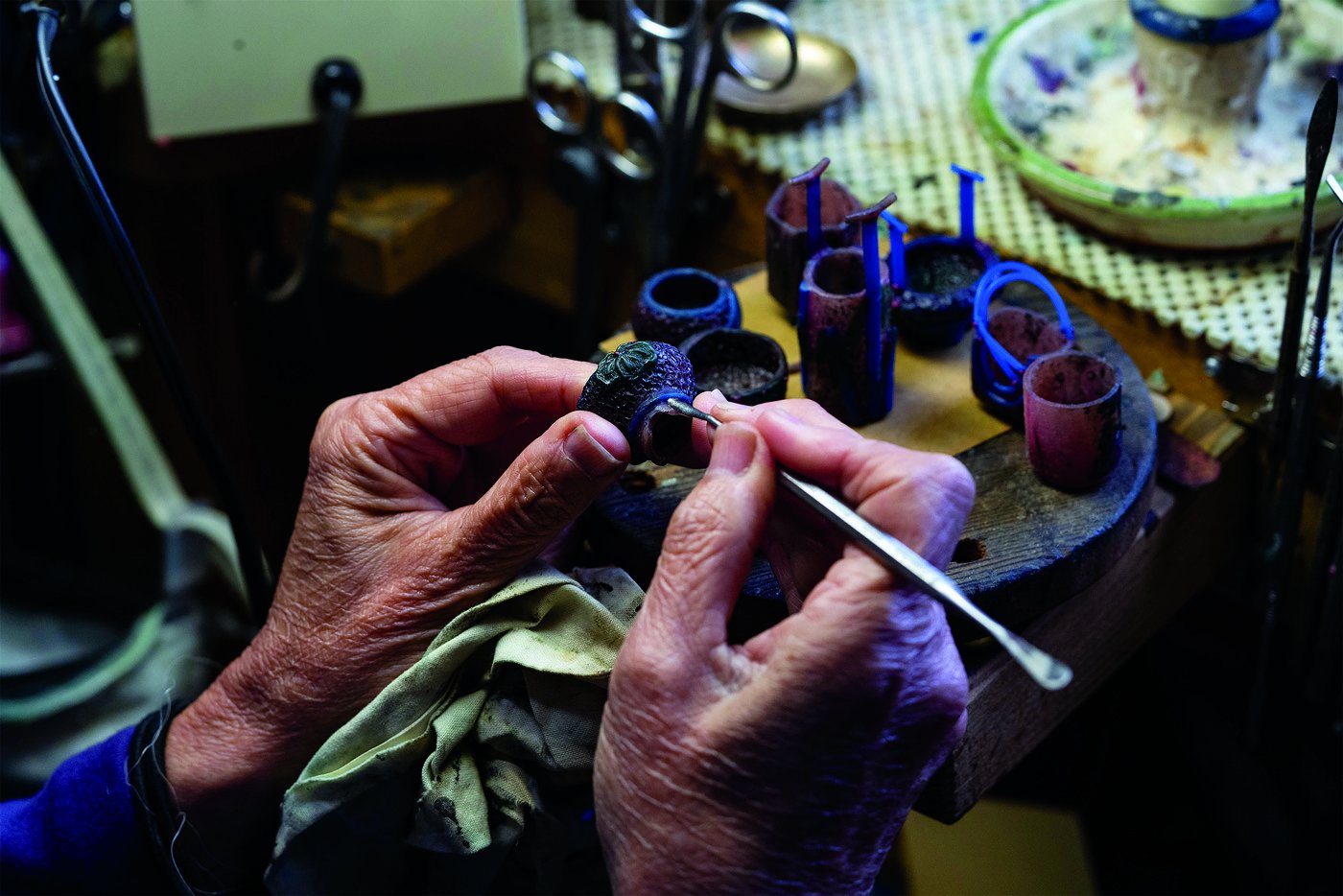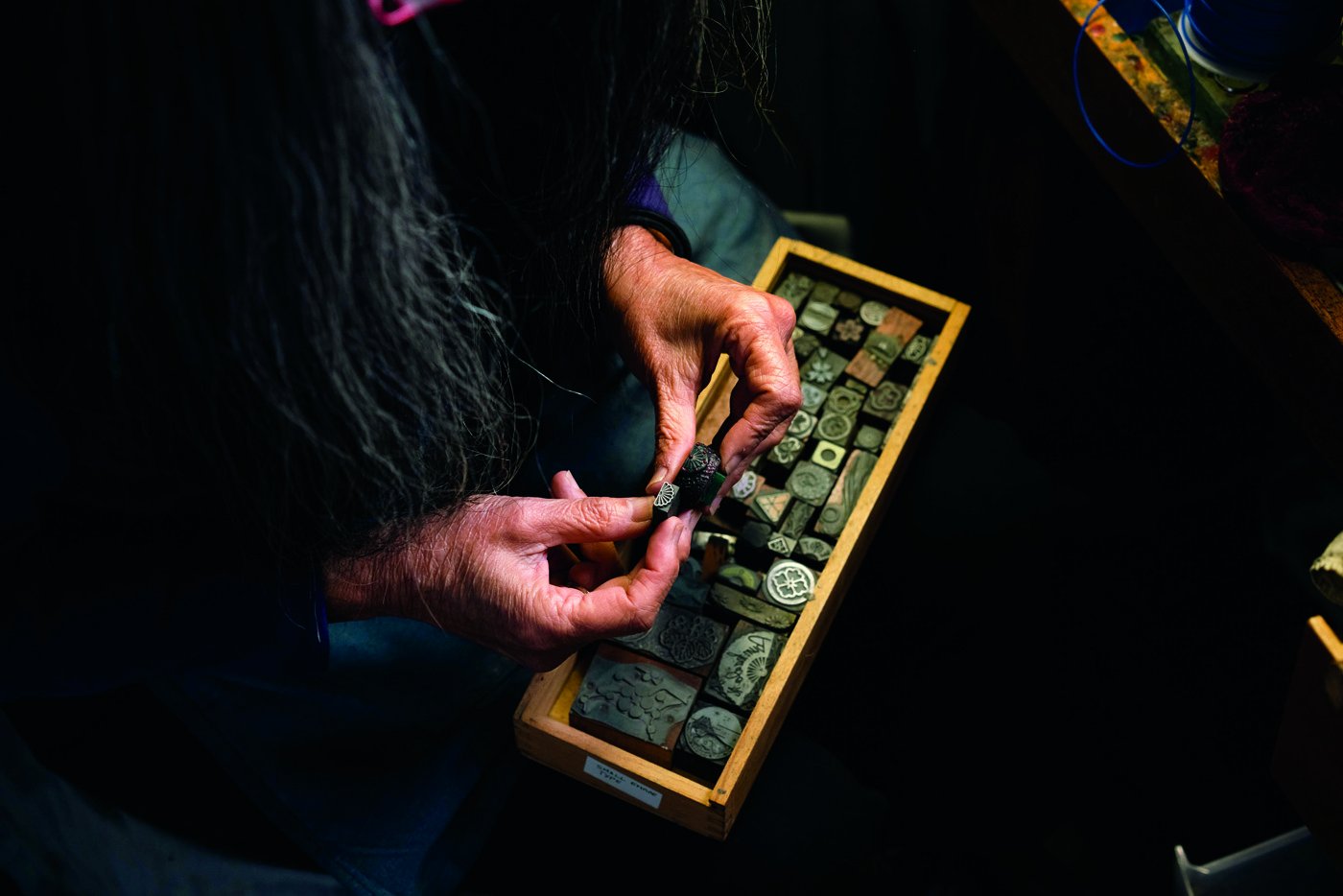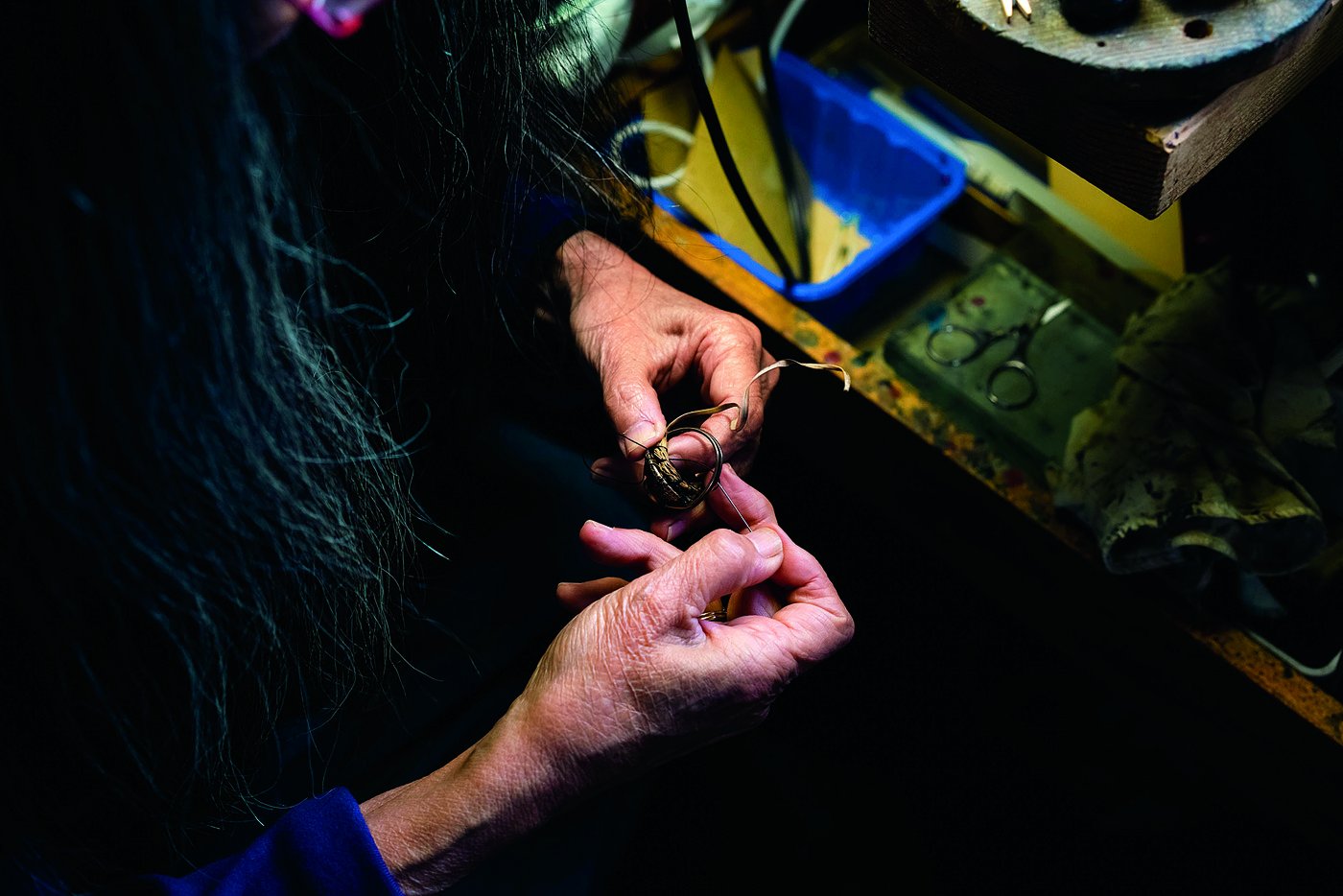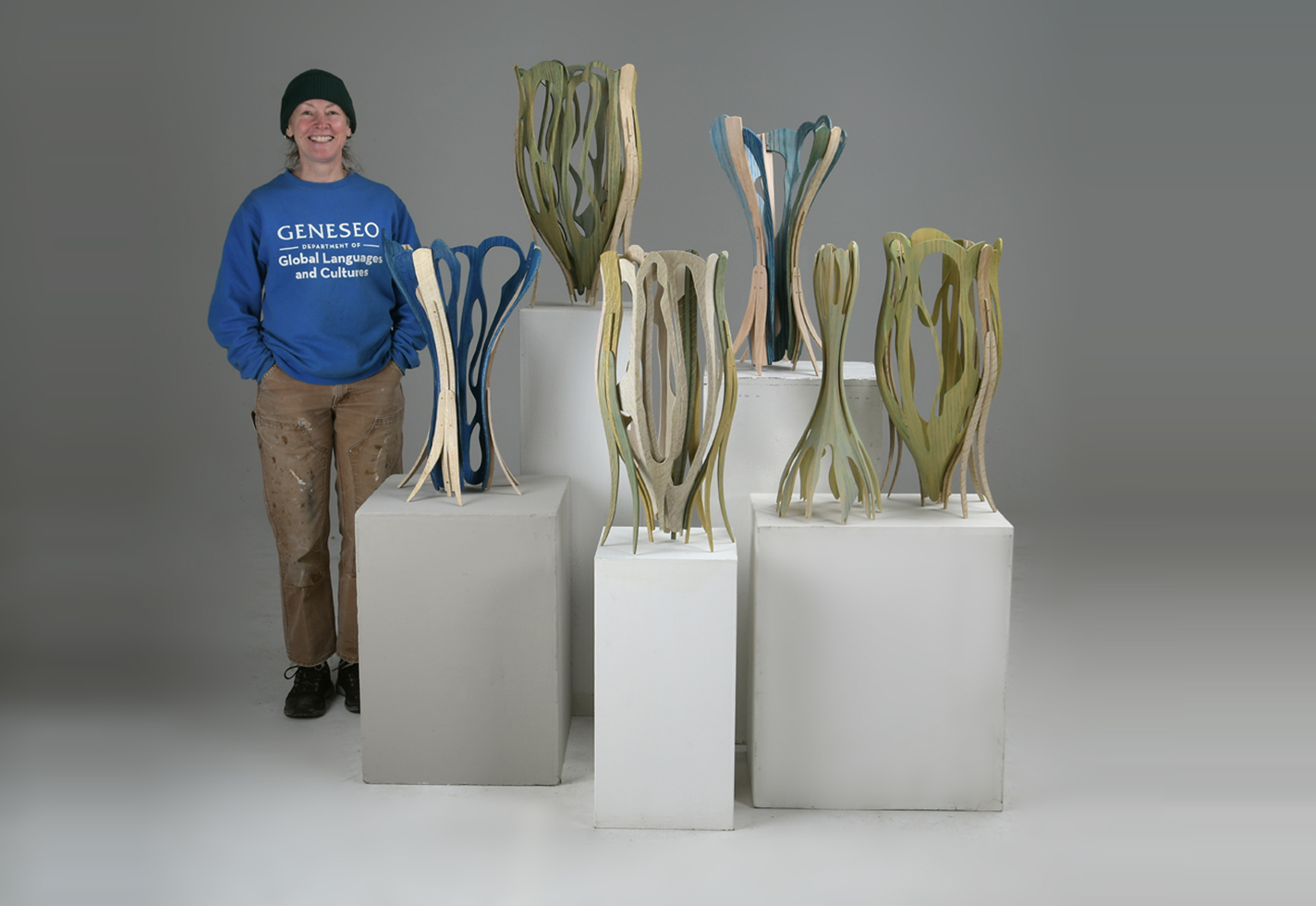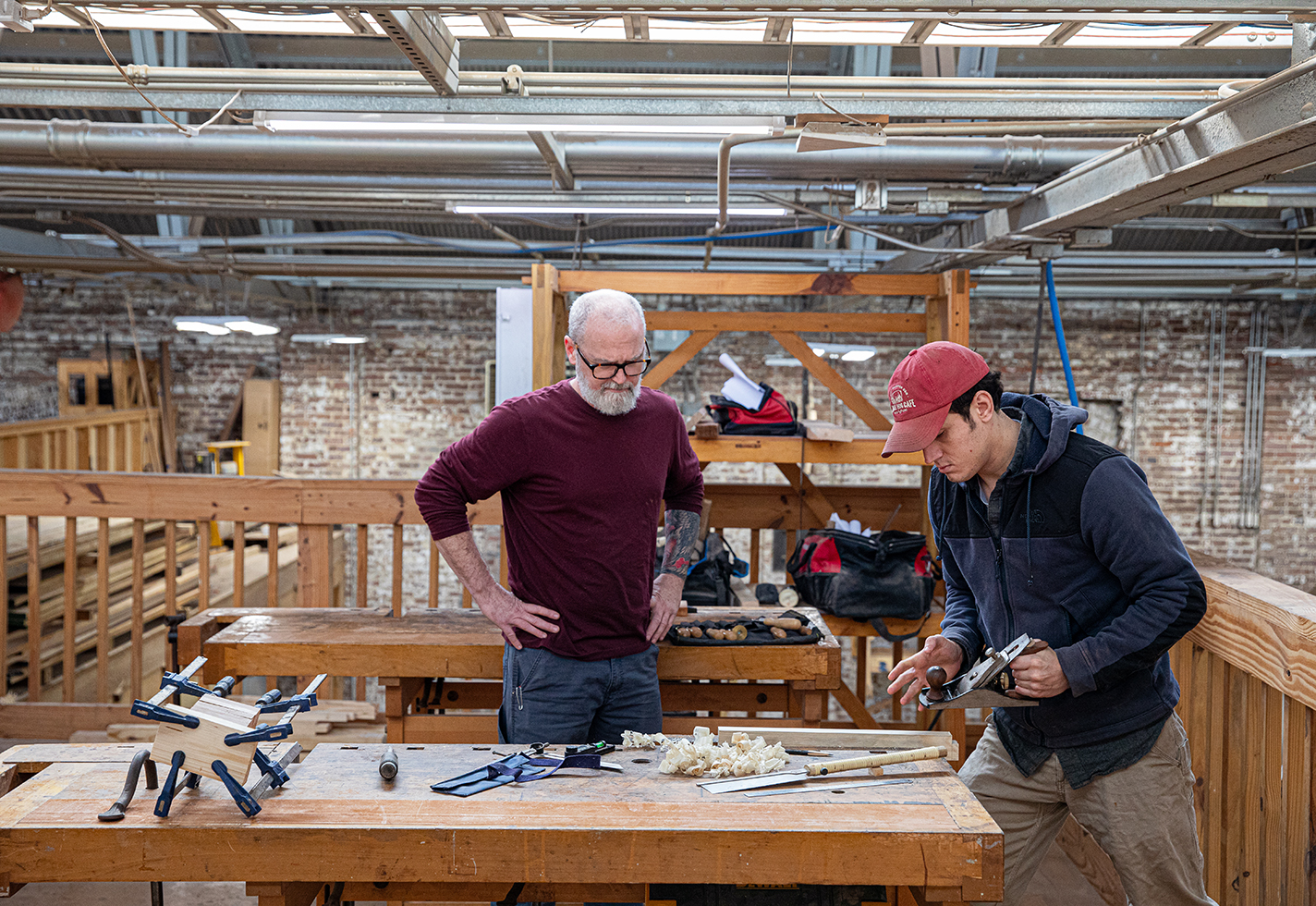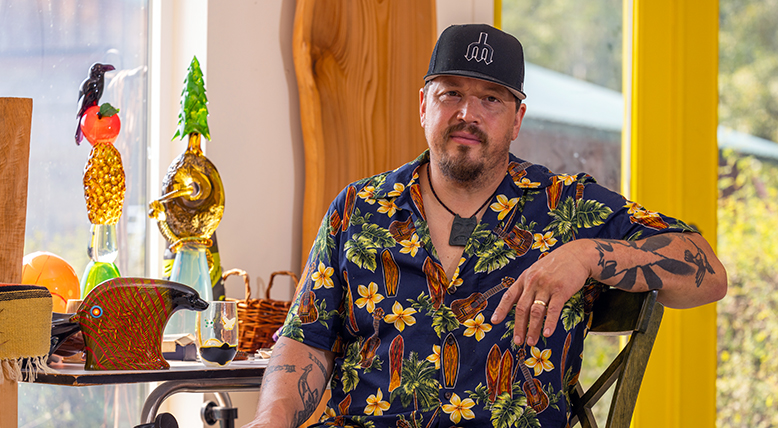The vessels are ornamented bronze, finished with basketry details: coils and weaving in natural materials like sweetgrass, seagrass, bamboo, and grapevine. Their shapes evoke Japanese pottery and basketry, and they’re sometimes embellished with precious metals and stones and images from the Japanese seasons.
And they’re about one and a half inches tall.
These exquisite micro-miniatures are the work of an artist who, as a little girl, spent hours in her father’s Los Angeles dental lab, watching him craft dentures from gold. Suzye Ogawa knew that she, too, wanted to make things, and small metalwork was a natural avenue for her. She was drawn to baskets as well. “I love the fact that women of all cultures have made baskets,” she says. “They’ve made them from things that normally get thrown away or get composted.” And because she grew up in Los Angeles’s Little Tokyo neighborhood, a vibrant Japanese American community, she also learned Japanese dance and ikebana, the art of flower arrangement. Putting all of that together created a nexus, she says. “I had the metal and the fiber, I like to work small—I’m nearsighted—and I had this really rich Japanese cultural environment that was subliminally giving me cues.”
During her career as a school speech therapist, Ogawa spent evenings and summer vacations developing her craft. The idea for her bronze baskets came to her while taking her first basketry class in the 1980s. “There was a wonderful little fiber shop around the corner from where I was living,” she says, “and I took my very first basketry class there, from a world-renowned basket artist who’s passed away, Judy Mulford. Working with her, a light went on in me.

“My studio is small, crowded, and quite messy with many processes worked on at one time,” says Suzye Ogawa, pictured here at her workbench. “Very few have seen my mess, so the secret’s out now."
